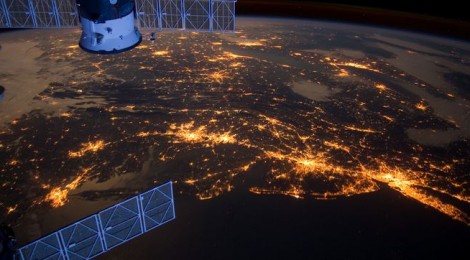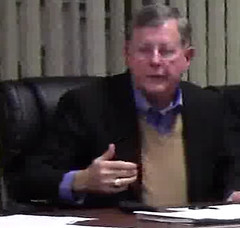 Solar companies are shaking out just like car and computer companies before them.
Dozens of automobile manufacturers shook out to a handful of major ones;
Tesla is the first new one in decades.
So many computer hardware and software companies went under or were bought
by bigger ones that it would take a very long blog post to list them all;
I could name a dozen or two off the top of my head.
There’s a shakeout going on right now among mobile phone manufacturers:
even mighty Nokia is sinking.
The solar industry is going through that same normal shakeout phase.
Will electric utilities be next?
Solar companies are shaking out just like car and computer companies before them.
Dozens of automobile manufacturers shook out to a handful of major ones;
Tesla is the first new one in decades.
So many computer hardware and software companies went under or were bought
by bigger ones that it would take a very long blog post to list them all;
I could name a dozen or two off the top of my head.
There’s a shakeout going on right now among mobile phone manufacturers:
even mighty Nokia is sinking.
The solar industry is going through that same normal shakeout phase.
Will electric utilities be next?
Stephen Lacey wrote for greentechsolar 23 April 2013,
Four Must-See Charts on the Future of the Global Solar Market:
Who will be left standing when the dust settles?
In 2009, after Spain’s market collapsed and the world faced a
crippling financial crisis, GTM Research predicted a shake-out in
the manufacturing sector. But unexpected growth in global demand,
particularly in European markets, helped keep many producers afloat.
Then, in 2010 and 2011, we saw a surge of new manufacturing capacity
— much of it driven by China — that created the
structural oversupply faced by the industry today. As illustrated by
the growing list of deceased solar companies and acquisitions, the
delayed shake-out in the industry is now well underway.
This morning at the GTM Solar Summit, Shayle Kann, vice president of
research, shared his outlook on consolidation, module prices, and
the shifting global demand through 2016. Here are four charts from
his presentation that provide a glimpse of what the world may look
like in the next three years.
In 2010, when the period of irrational growth began in solar
manufacturing, there were 357 active module producers.
By the end of this year, that number will be down to 145. And in
2016, it will drop below 100. (So if you’re at a conference talking
to a person involved in manufacturing, there’s a good chance he or
she might be out of a job or working for a different firm the next
time you see them.)
 He then predicts that solar PV panel prices may actually rise
briefly due to fewer manufacturers.
However, as he notes, demand will keep going up.
And demand combined with economies of scale may make prices continue down
with
Moore’s Law.
I think his installed capacity graph is way too conservative,
because he doesn’t go back far enough, which would reveal that
2010 growth is not an anomaly, it’s
a steady continuation of the
previous decade (well, except in Georgia).
We shall see what happens in the next few years.
He then predicts that solar PV panel prices may actually rise
briefly due to fewer manufacturers.
However, as he notes, demand will keep going up.
And demand combined with economies of scale may make prices continue down
with
Moore’s Law.
I think his installed capacity graph is way too conservative,
because he doesn’t go back far enough, which would reveal that
2010 growth is not an anomaly, it’s
a steady continuation of the
previous decade (well, except in Georgia).
We shall see what happens in the next few years.
One thing’s for certain:
a few bankruptcies are not a problem for the world’s fastest-growing
industry.
They are merely a symptom of any industry growing that fast.
Solar panels will continue to spread, ever-faster,
and
electric utilities need to adapt
or soon their big utility shakeout will start, too.
The utility shakeout may look more like an increase
in companies, as many solar installers and vendors move in to
handle distributed solar power
if the incumbents won’t do it.
That’s my speculation, and again we’ll see.
-jsq
 Pandora’s Promise.
The film discounts solar and wind energy because its makers
don’t understand the exponential decrease in solar prices or
the night backup power ability of wind connected with a smart grid.
The vast majority of the American people already are demanding
those real renewables instead of nuclear or coal,
and the economics of wind and solar are also rapidly beating natural gas.
Pandora’s Promise.
The film discounts solar and wind energy because its makers
don’t understand the exponential decrease in solar prices or
the night backup power ability of wind connected with a smart grid.
The vast majority of the American people already are demanding
those real renewables instead of nuclear or coal,
and the economics of wind and solar are also rapidly beating natural gas.


















